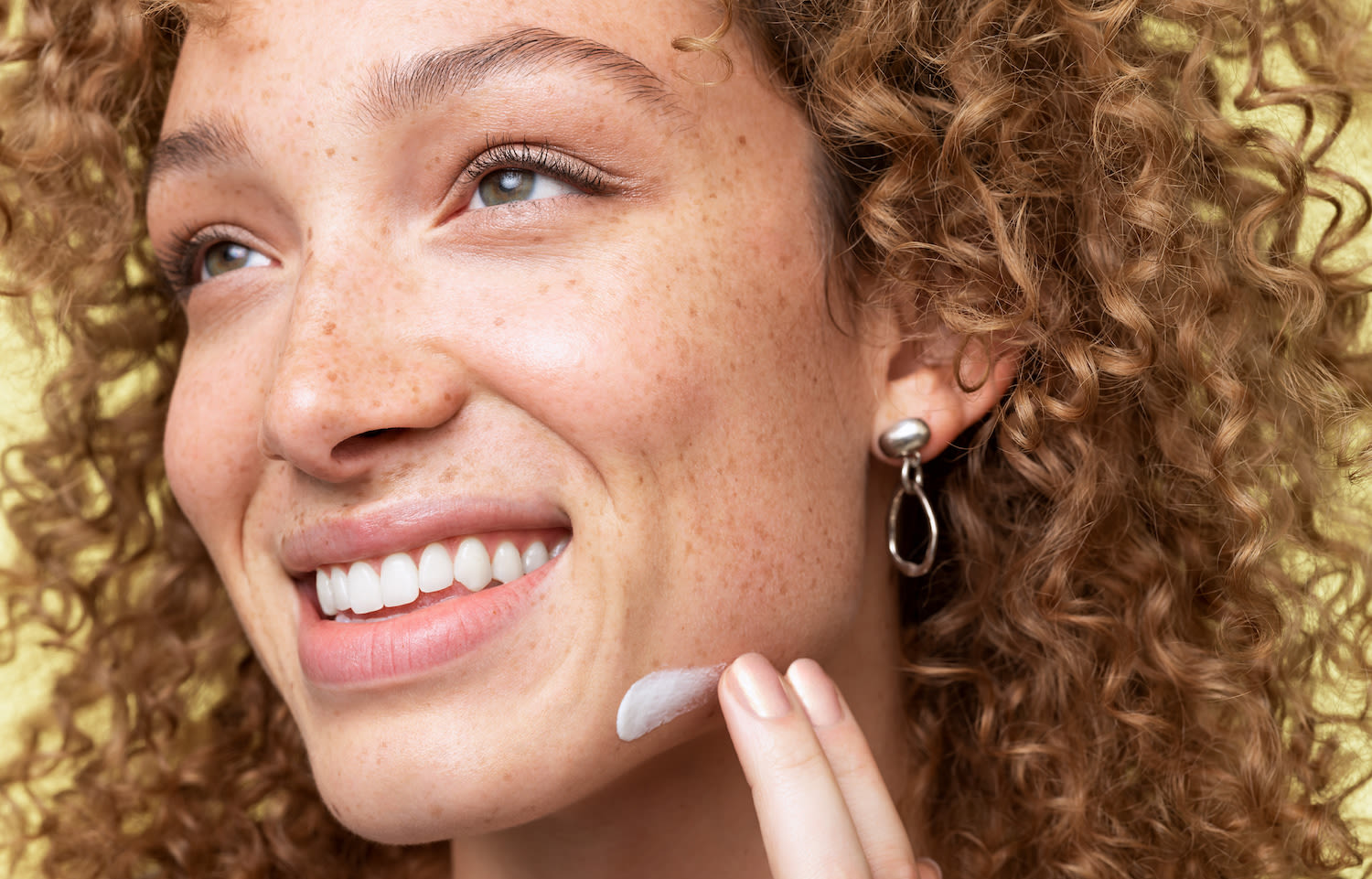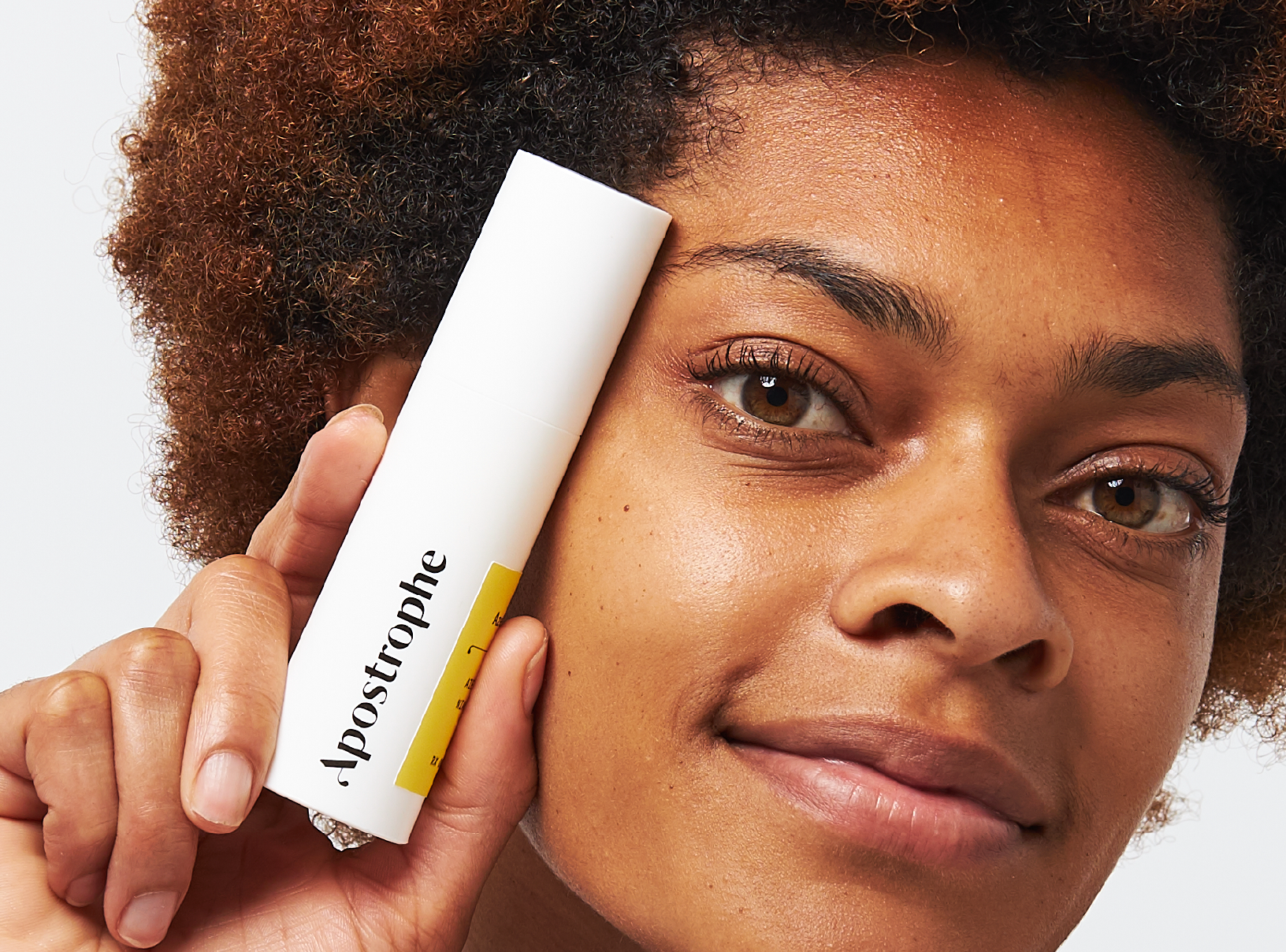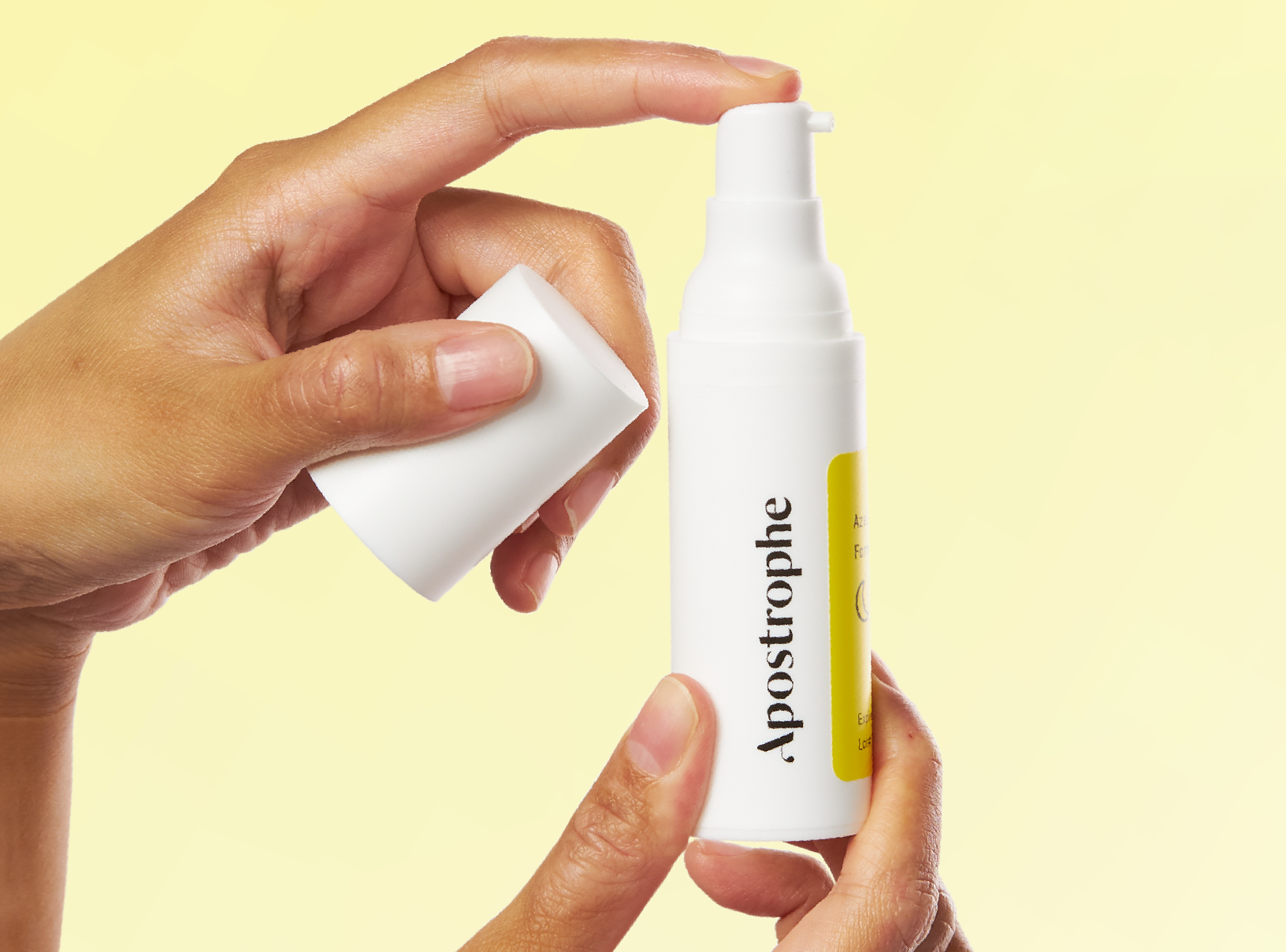Education
A Beginner's Guide: Part 1 - How To Choose Your Sunscreen


SHARE
Education
A Beginner's Guide: Part 1 - How To Choose Your Sunscreen
Medically reviewed by Aimee Paik, MD
Written by Apostrophe Team
Last updated 10/1/2024
There’s one product that dermatologists all use every day. They recommend it over and over, and say that it helps prevent wrinkles, fine lines, and even cancer. Sunscreen. You’ve heard it before, but the best thing you can do for your skin is to apply sunscreen with an SPF of at least 30 everyday, rain or shine. The dermatology providers on our platform receive dozens of questions about sun protection, so we’ve put together a post to help guide you through the best practices. Read on to find the best routine for your skin!
What’s your (sun) damage?
The sun emits three types of ultraviolet radiation4 – Ultraviolet-A (UVA), Ultraviolet-B (UVB), and Ultraviolet-C (UVC). UVC rays are absorbed by the ozone layer of the atmosphere and do not reach the Earth’s surface. However, UVA and UVB rays are able to penetrate the atmosphere and can damage your skin in a few different ways.
UVA(ging) radiation
UVA hits both the top layer and underlying layers of skin and creates damaging reactive oxygen species (ROS). These chemical substances, commonly referred to as free radicals, speed signs of aging and cause cells to produce melanin as a form of self-defense. Melanin darkens your skin, thereby helping the top layers of your skin absorb more energy so the deeper cells stay protected. It’s also important to note that UVA rays’ ability to penetrate more deeply into the skin also allows them to damage underlying blood vessels and connective tissues. Over years of exposure, the damage to these important structural components will become obvious at the surface as the skin begins to lose elasticity and wrinkle. For this reason, doctors and skincare experts consider UVA to be the “aging” form of radiation. Unfortunately, good UVA protection is difficult to come by. Board-certified dermatologist Dr. Aimee Paik says, "The best sunscreen ingredient that protects against UVA rays is Zinc Oxide." Be sure to check ingredient labels before you purchase!
Feel the burn
UVB radiation causes the heat you feel when standing in the sun. Your body’s natural defense to this heat is to dilate your capillaries to increase blood flow to the skin, which leads to everyone’s favorite vacation ailment - erythema, or sunburn. The increased blood flow helps cool your skin while also bringing necessary nutrients to the affected areas, but also leads to the telltale irritation and inflammation of a sunburn.
Dr. Paik, also adds, "UVB rays are actually what convert vitamin D to its active form in the skin. But these are also the same exact rays that cause non-melanoma skin cancers, specifically basal cell cancers and squamous cell cancers, which make up the vast majority of skin cancers." The good news is that all sunscreens have UVB protection which means you are protected against most types of skin cancers!
Sunscreen: what you need to know
Now that you know the main forms of damaging radiation are UVA and UVB, what can you do about it? Sunscreen, sunscreen, sunscreen! Consistent application of an effective sunscreen is essential to your defense against the sun. Unfortunately, there’s a lot of confusion and misinformation out there about what “effective” really means. We’ve broken down the most important factors to consider when choosing your sunscreen.
The American Academy of Dermatology identified the three most important factors in choosing a sunscreen as:
SPF measures how well a sunscreen protects against UVB radiation. The minimal erythemal dose (MED) is the minimal dosage of ultraviolet radiation that causes a sunburn. SPF is defined as the MED ratio of unprotected skin to sunscreen protected skin. In layman’s terms, sunscreen with an SPF of 5 will take five times as much time to burn as unprotected skin. The American Academy of Dermatology recommends that you choose a sunscreen with a minimum of SPF 30.
Broad spectrum coverage: Broad spectrum coverage measures how well a sunscreen protects against UVA radiation. It is very important that you choose a sunscreen that says either “broad spectrum” or “UVA/UVB”. Without this, your skin will still be at risk of premature aging and skin cancer.
Water resistant for at least 40 minutes*: Water resistance claims signify the product’s ability to protect your skin during and after swimming and/or sweating. There are now three categories for water resistance:
No water resistance: products must include a warning on the back label to apply a water-resistant sunscreen if swimming or sweating.
40 minute water resistant claim.
80 minute water resistant claim.
If you are swimming or sweating in the sun, make sure to choose a sunscreen with at least a 40 minute water resistance claim and reapply accordingly. Remember that water resistant does not mean waterproof! Reapply sunscreen when necessary to avoid that damaging radiation.
*Depending on your lifestyle, you likely will not need to use a water resistant sunscreen daily, but we recommend using one when swimming or sweating.
The best sunscreen for your skin
When it comes to finding the best sunscreen for your skin, we recommend opting for lightweight formulas that provide broad-spectrum protection to keep your skin protected.
Can’t get enough info on sun protection? Check out part two of this guide here.
1. How to choose and use a sunscreen. DermNet New Zealand. https://www.dermnetnz.org/topics/how-to-choose-and-use-sunscreen/. Accessed February 26, 2019.
2. Reactive Oxygen Species. NeuroImage. https://www.sciencedirect.com/topics/neuroscience/reactive-oxygen-species. Accessed February 26, 2019.
3. Sunscreen FAQs. American Academy of Dermatology. https://www.aad.org/media/stats/prevention-and-care/sunscreen-faqs. Accessed February 26, 2019.
4. Ultraviolet radiation and human health. DermNet New Zealand. https://www.dermnetnz.org/topics/ultraviolet-radiation-and-human-health/. Accessed February 26, 2019.
Like what you just read? Sign up for our email list to get the scoop on skincare science delivered straight to your inbox.

Deep Dives
A dermatologist shares his thoughts on the recent studies about benzoyl peroxide and benzene.
Read More
Education
What is milia?
What is milia? Today, we’re jumping into one type of bump that you may have heard about most commonly in infants — milia.
Read More
Education
Best moisturizer for acne-prone skin
If you have combination acne-prone skin, figuring out which moisturizer is best for your skin might be tough. In this guide, we break down the best moisturizer for combination, acne-prone skin.
Read More
